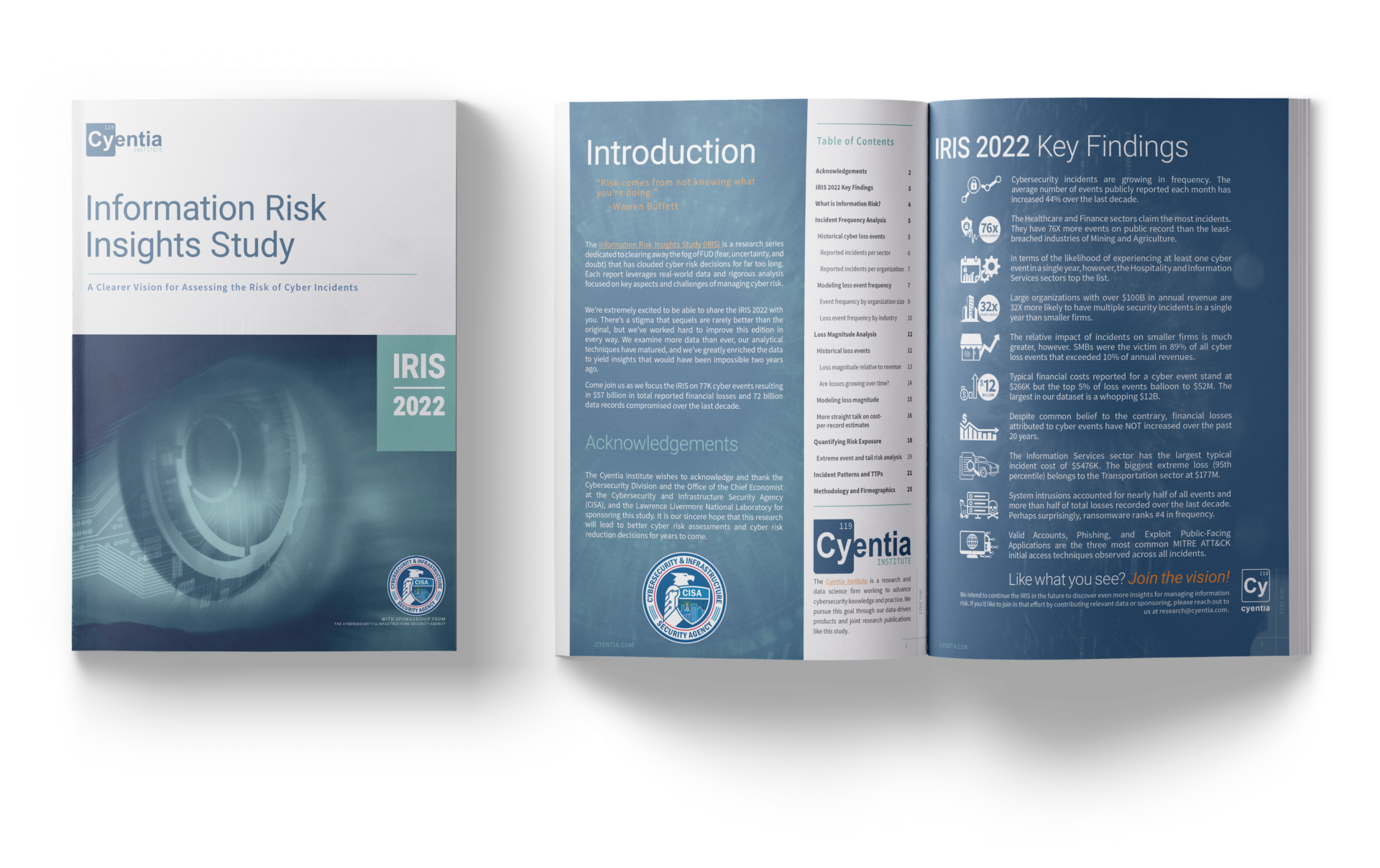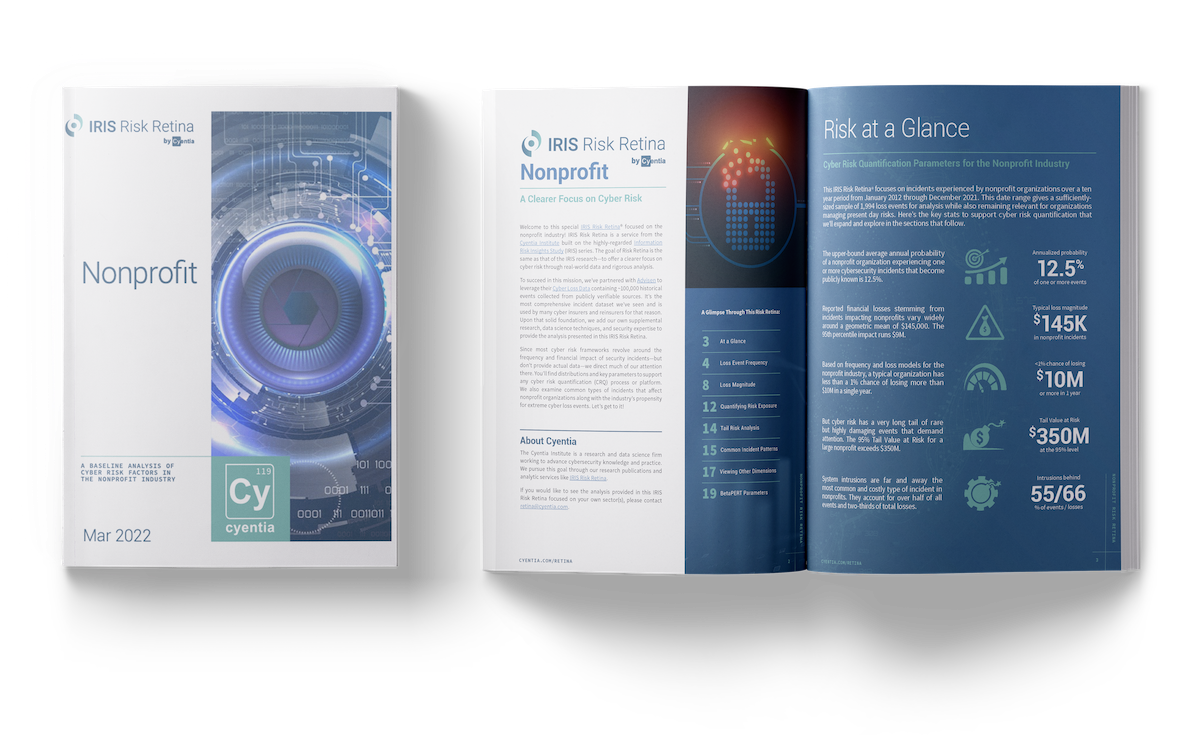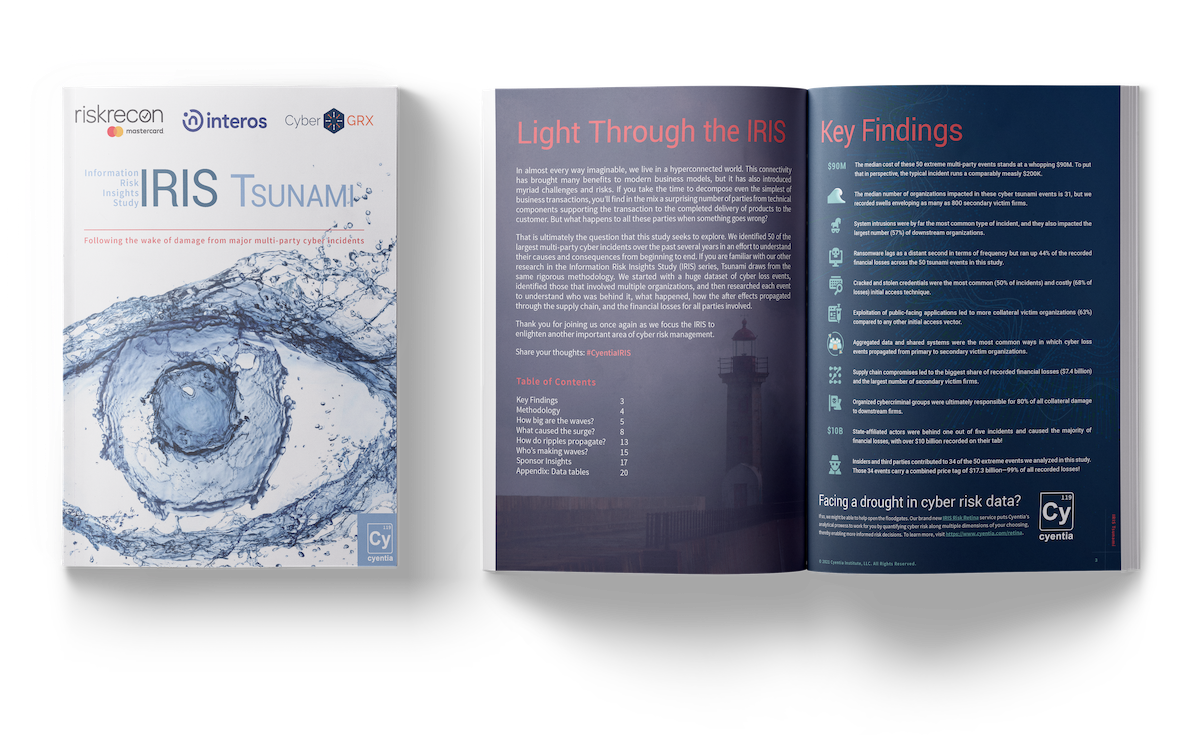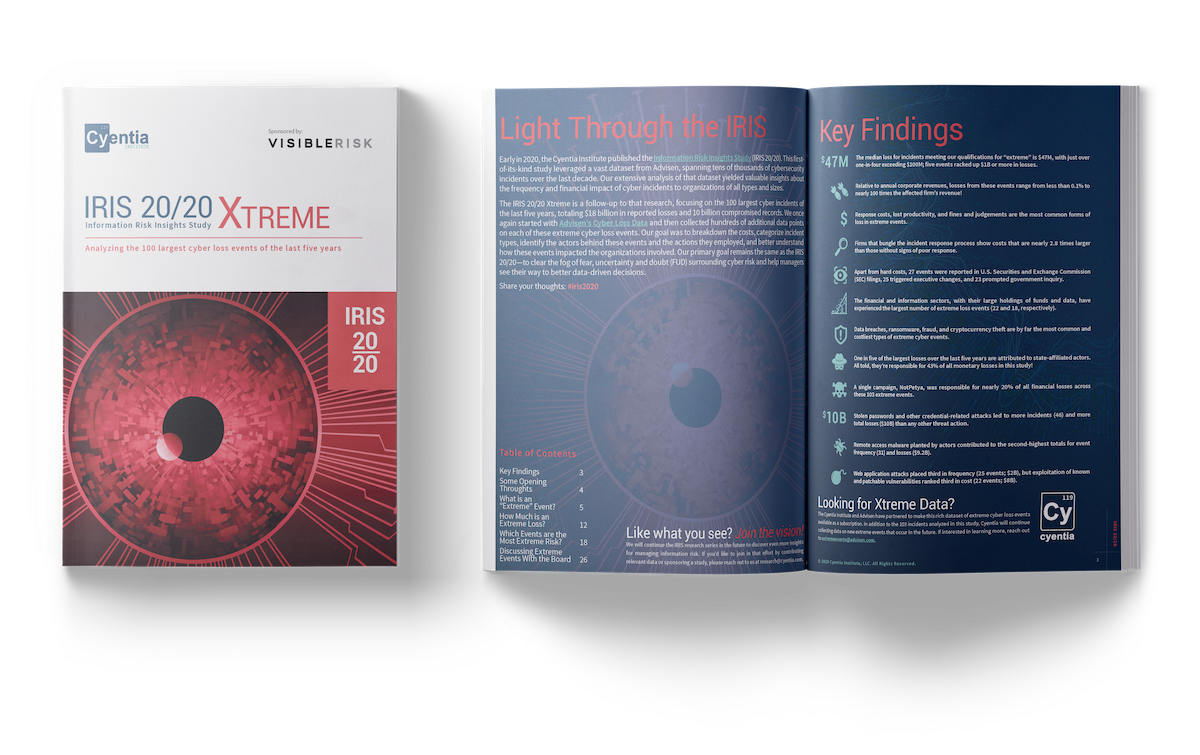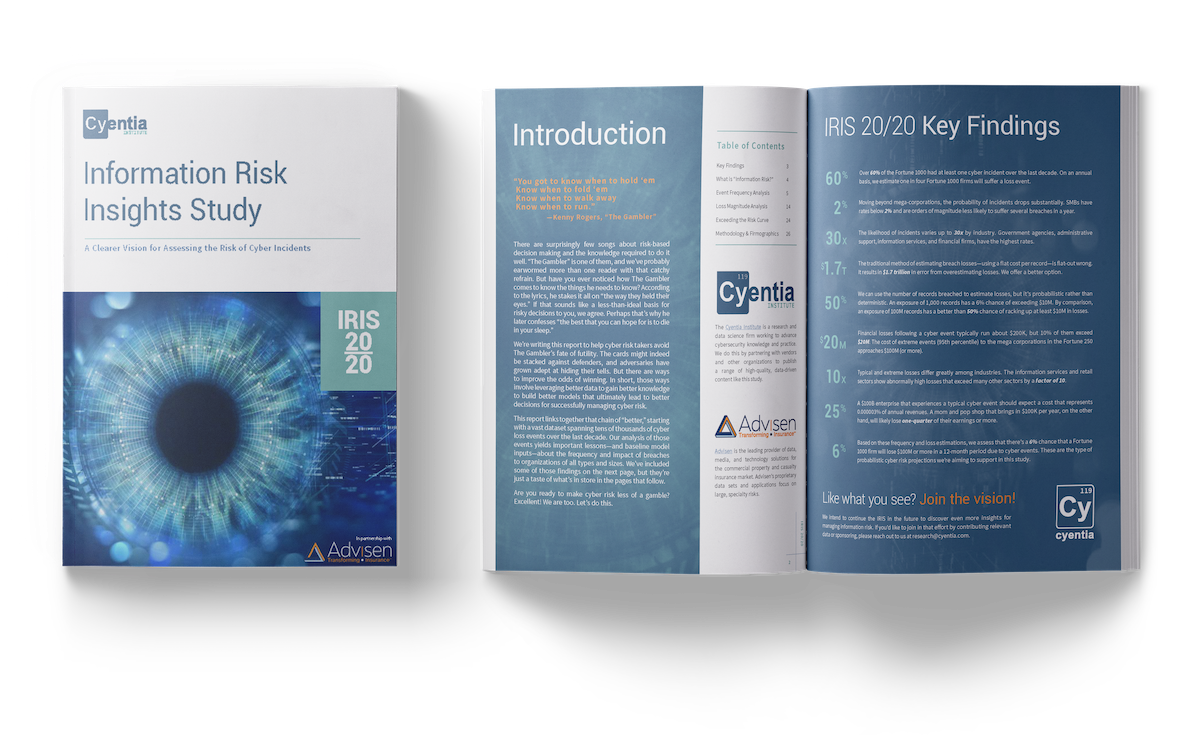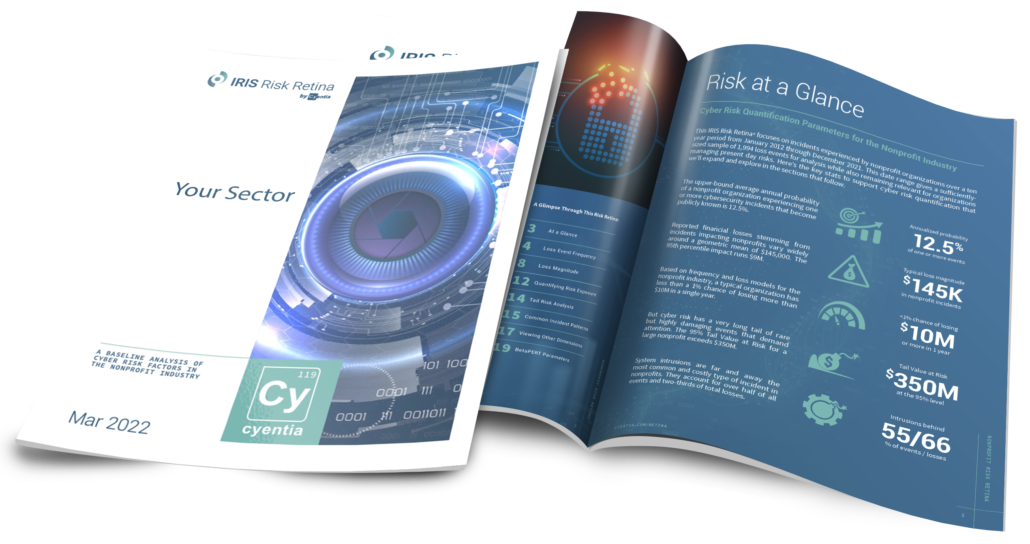Unveiling the IRIS 2022
The new Information Risk Insights Study has arrived!
Since its original release in 2020, the Information Risk Insights Study has expanded upon its extensive analysis of a huge historical dataset in the IRIS series, shining light on topics like extreme loss events and massive multi-party incidents.
Now, thanks to sponsorship from the Cybersecurity & Infrastructure Security Agency (CISA), the IRIS is back – bigger and better than ever for a 2022 update and expansion. The new study analyzes 77,000 cyber events, $57 billion in reported losses, and 72 billion compromised records. We explore common patterns among those events and identify threat techniques that contributed to their success.

